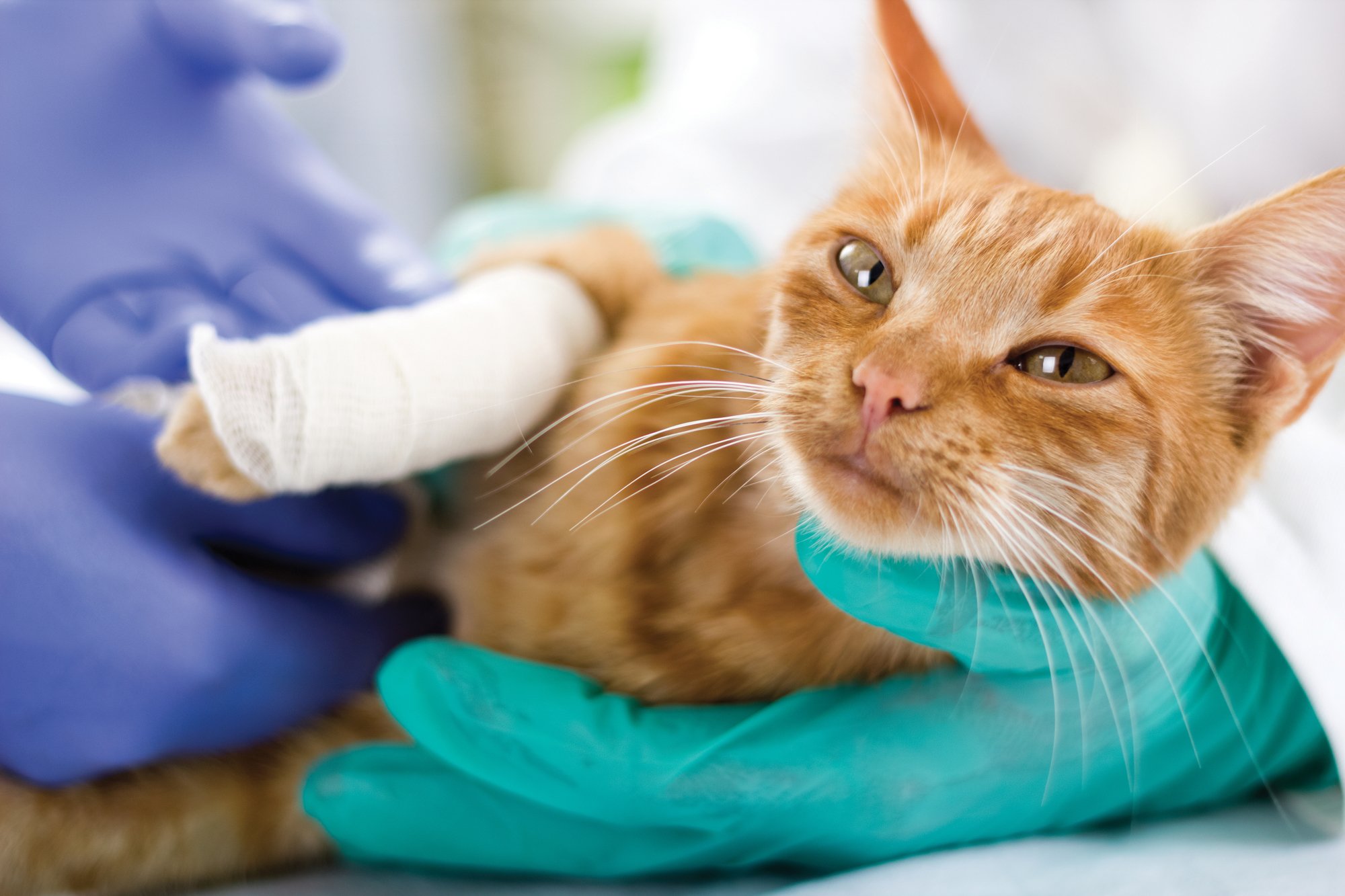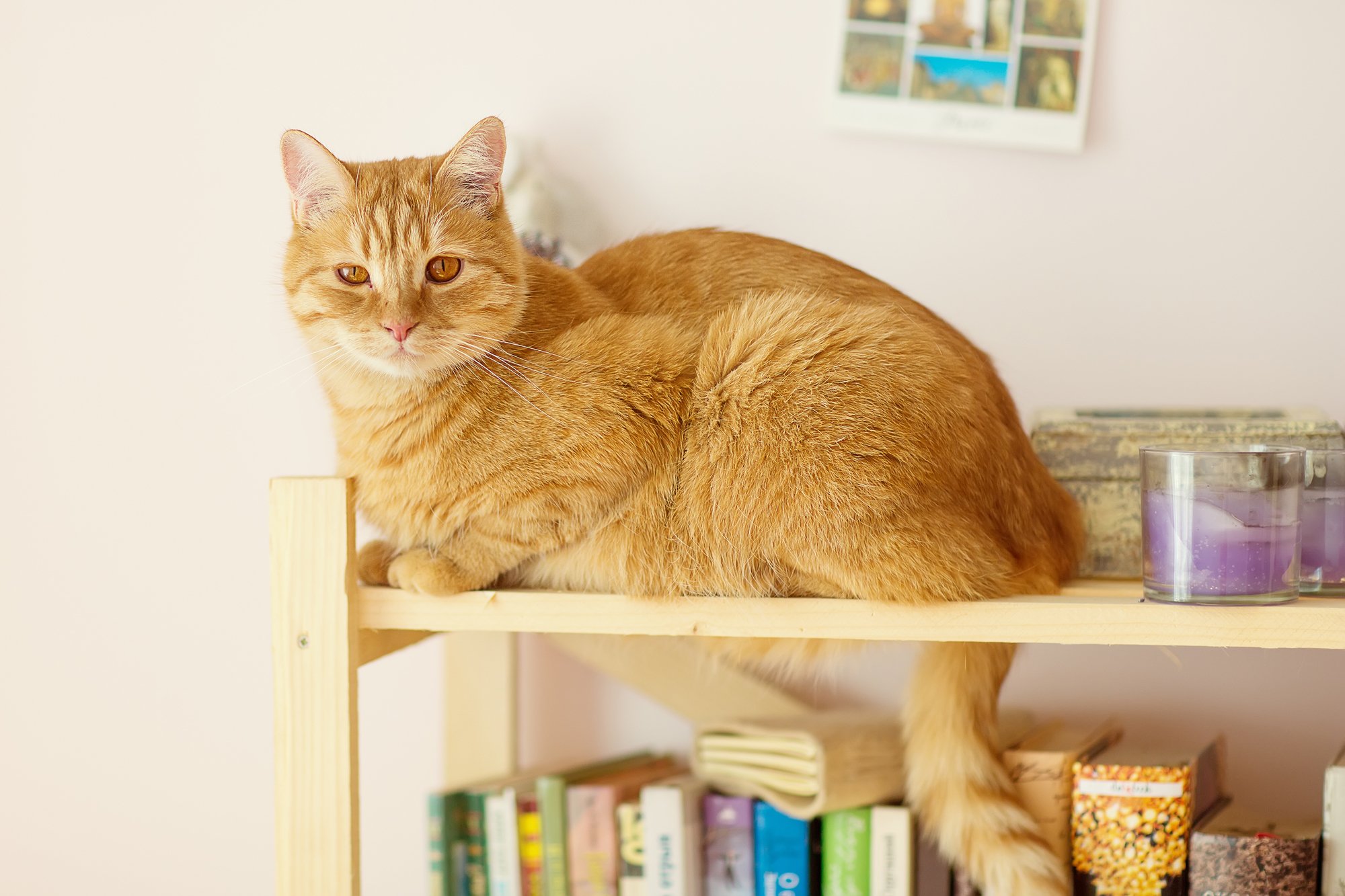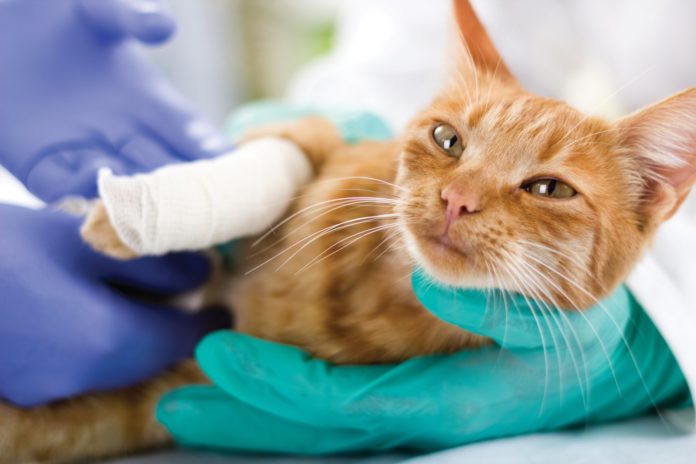The days of hearing, “It’s just a cat,” are thankfully fading fast. Owners are increasingly more attuned to behavioral and physical changes in their cats that indicate injury or illness, and more enthusiastic about pursuing diagnostics and treatments to achieve the best possible outcome.
pyotr021 | Deposit Photos

Physical rehabilitation can restore your cat to pain-free mobility. The outcome for each cat depends on the severity of the condition or injury, the treatments provided, and the compliance of both the patient and owner. Several modalities and exercises can be done in-hospital by members of the veterinary team, but most rehab programs include exercises and lifestyle changes for you to do at home to help your cat progress.
If your cat is in rehab for weight issues, think of it as a kitty gym membership. You will be given exercises and activities to do at home with your cat, plus dietary guidelines to promote safe, controlled weight loss.
When Rehab Is Needed
Rehabilitation is becoming a mainstay in the treatment of orthopedic injuries and conditions in dogs, and the same principles apply to cats. A few conditions and injuries that benefit from a rehab program include:
-Fractures
-Patella luxation
-Corrective surgery for hip dysplasia or trauma
-Intervertebral disc disease
-Cruciate ligament tears
-Arthritis
-Obesity
“A very common finding is pain in the lower back. Many older cats do not like to be touched here,” says Christopher W. Frye, DVM,ACVSMR, CVA, Assistant ClinicalProfessor of Sports Medicineand Rehabilitation at the Cornell University School of Veterinary Medicine. “Cats in general with arthritis often do not jump as well as they used to and become less active. Cats also can get luxating (displaced) knee caps, cruciate ligament disease in their knee (similar to people), hip dysplasia, slipped discs, and more. Many of these issues lead to osteoarthritis,” he explains.
“Cats are unique in their ability to conceal disease; I am sure part of their super power in that regard is to avoid sending signals to potential predators that they are injured or sick,” says Dr. Frye. Traumatic injuries are the easiest for owners and veterinarians to see and diagnose, as the cat goes from being happy and active to acutely injured. A cat who has been hit by car or fallen from a window and hurt himself is likely to be brought to the veterinary clinic quickly. At that point, a diagnosis can be made, and any necessary surgeries performed.
Chronic joint and mobility problems are difficult to detect because our feline friends prefer to hide signs of discomfort. While some cats with arthritis or other joint problems may develop a limp, more often owners notice that their cats are hiding more or have stopped jumping up to favorite perches like a windowsill. Some cats may have trouble getting in and out of tall litterboxes and start having accidents on the floor, and others may avoid going up or down stairs. A painful cat may become cranky with humans and other pets in the household that he previously got along with.
Modalities
Therapeutic modalities limit the inflammatory process and promote healing and pain relief. Those commonly used in animal physical rehabilitation include:
Heat. Applying heat decreases pain and muscle spasms. Heat increases circulation (to reduce edema and promote healing by increasing the supply of oxygen and nutrients to the injured tissues) and tissue extensibility to make stretching and other exercise easier and more comfortable. Heat should not be used for acute injuries because it can make the existing inflammation worse, but it works well for chronic injuries and for warming up a joint before exercise.
Cryotherapy. Applying a cold pack to an injured area relieves pain and reduces inflammation. Icing is often used after exercises to prevent inflammation and the resulting discomfort.
Therapeutic laser. Laser light stimulates natural healing in the injured cells, and is believed to decrease inflammation, increase circulation, and promote pain relief and accelerated healing. Laser can be used immediately after surgery and throughout the healing process, and some owners and practitioners have had success using laser to provide pain relief for chronic injuries.
Therapeutic ultrasound. Sound waves pass through the injured tissues, warming them up and promoting circulation, tissue extensibility, and pain relief. Ultrasound also alters the permeability of cell membranes, which can promote wound healing. These treatments are done in the veterinary hospital.
Electrical stimulation (E-stim). Gel pads are placed on the cat’s skin to allow an electrical current to pass through. Depending on the settings used, e-stim can be used to provide pain relief or to cause muscles to contract to prevent atrophy. It also increases circulation and decreases muscle spasms. E-stim is usually done in the veterinary hospital, but for extremely painful cats, the veterinarian may send home a TENS (transcutaneous electrical nerve stimulation) unit to use at home for pain relief.
Targeted Pulsed Electro-Magnetic Field (tPEMF). These devices use magnetic fields to induce an electrical current in the tissues, which leads to a cascade of chemical processes that produces nitric oxide, an anti-inflammatory molecule. One of the benefits of tPEMF devices is that they work through bandages and can be easily used at home.
Cats usually tolerate therapeutic modalities well, especially since most of the therapies feel warm or do not induce any sensation at all. Cryotherapy may take some creativity and patience on your part, however. Forcing a cat to sit still for a treatment is counterproductive and will cause him to be more resistant the next time around, so it may be necessary to take breaks and work up to full treatment times. If your cat is intolerant of a particular modality, your rehab team should focus on therapies he accepts.
MyGoodImages | Deposit Photos

Therapeutic Exercise
Therapeutic exercise is the backbone of rehabilitation, done both in-hospital during appointments and by owners at home. Passive range of motion (PROM) is commonly used for a wide range of conditions and involves gently guiding your cat’s joints through flexion and extension. PROM is especially important if the cat is not using a leg, as limbs that are not being used quickly lose muscle tone and can experience contracture. PROM keeps the joint moving, and allows both you and your cat’s rehab team to evaluate any changes in range of motion.
Other exercises focus on active range of motion and/or strengthening. For example, stepping over cavaletti (row of small jumps) encourages joint flexion, and walking up ramps and stairs encourages hip and stifle extension. Standing on an unstable surface, such as a couch cushion or air mattress, engages your cat’s core muscles and helps with muscle strengthening. The exact exercises prescribed will vary based on your cat’s injury, and difficulty will be increased over time.
Getting your cat to do his exercises may take some creativity. Dr. Frye recommends, “Some cats are food motivated and we use treats to get them to perform certain tasks or activities that target range of motion, strength, spatial awareness, and more. Other cats will follow a laser light or even perform tasks out of play or love. Sometimes I think cats are a lot like people in that you have to convince them more strongly to perform their physical therapy.”
PROM can usually be done easily while your cat is resting in your lap. If he gets up and leaves, you can resume after a break. For more active exercises, use treats and toys as motivators, or take advantage of behaviors your cat already does. For example, if he has a favorite napping spot, you can place objects between him and his bed so that he has to step over them to get there. Always try to quit while you are ahead and your cat is still actively participating or at least tolerating you. Breaking exercise sessions into small bits each day will keep your cat happier and make your job easier. And, yes, cats can exercise on an underwater treadmill! Despite the common belief that cats hate water, many tolerate it quite well and may even come to enjoy it. Introduce it gradually, with plenty of rewards and praise for your cat.
Worth the Effort
For arthritis and range-of-motion problems in your cat, learning to do physical therapy/rehabilitation can mean many more years of a happy, playful cat.
While it may take some extra time out of your already busy day, the rewards will far outweigh the effort. Discuss therapy options with your veterinarian.
Therapy Rules and Restrictions
While healing from an orthopedic injury or surgery, your cat will probably have exercise restrictions such as no running, jumping, or rough play. To enforce these rules, you must confine your cat in some way, either limiting him to a small room that doesn’t have furniture he can jump on or by keeping him in a large dog crate. These restrictions can be frustrating for both cat and owner, but they are important to prevent him from doing too much too soon. For example, jumping right after a broken leg has been repaired could damage any healing that has occurred or even compromise the repair. Orthopedic surgeries are expensive and traumatic enough as it is—no one wants to have to do a second one to re-do the first. One of the upsides to keeping your cat confined is that he will appreciate therapy sessions even more, as they give him a chance to interact with you and do something fun!
Limb Contracture
While many cats do well with three functional legs, four is obviously ideal. When a cat injures a leg, he may not use it. This quickly leads to muscle atrophy (loss) and joint contracture. Contracture is when a leg or joint is held in a flexed position for long enough that it becomes unable to extend again. Both atrophy and contracture happen more quickly than they can be reversed, and the best-case scenario is to prevent them from happening altogether by using rehab exercises and controlled activity.




